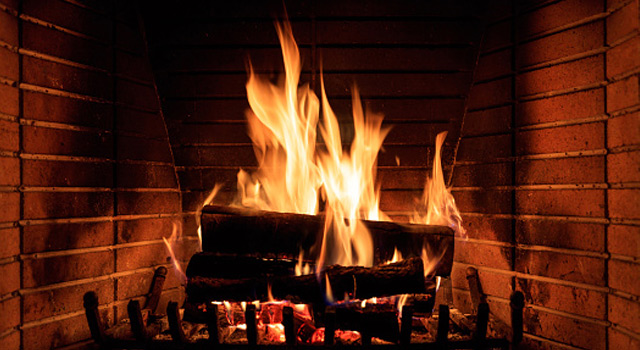A working fireplace does a great job at keeping your home warm and cozy in the cold months without increasing your electric bill. But does a fireplace increase home insurance? Generally speaking, having a fireplace does mean higher homeowners insurance premiums. Let’s dive into the details.
Do fireplaces impact insurance rates
Fireplaces are one of the most traditional features of a home. They provide a warm, inviting atmosphere and help to heat your home. But they also pose serious risks to your home and family.
Here are some of the risks posed by a fireplace:
Levels of Premium Increase
Standard homeowners insurance covers damage from fire and smoke, including accidental fires caused by chimney fires and fireplaces. However, insurance carriers typically charge higher premiums for homes with fireplaces because they see an increased risk that they’ll have to pay out a claim.
How much your home insurance rate goes up mostly depends on the type of fireplace you own. Of course, pricing will vary from insurance carrier to insurance carrier.
| Wood-Burning |
| Will increase your home insurance rate the most, as it is the most likely type to cause a fire. |
| Gas-Burning |
| May increase your home insurance rate, but not as much as a wood-burning fireplace. |
| Electric |
| May not affect your home insurance rate at all. |
Types of fireplaces
As noted above, there are three main types of fireplaces.
Wood-Burning (fireplace or stove)
Gas-Burning
Electric
Wood-Burning
The most traditional type of fireplace is wood-burning. It usually features a wide opening, allowing you to see the wood burn. Many homeowners prefer the natural smell and warmth of a wood-burning fireplace.
A freestanding wood stove is another kind of wood-burning fireplace. Given the risks involved with wood stoves, your home insurance carrier may want to confirm that it has been properly installed and that it has passed a safety check by an official inspector.
Gas-Burning
Gas fireplaces are more efficient and easier to maintain than wood-burning fireplaces. They also produce less air pollution thanks to purifying filters. However, a gas leak from a gas-burning fireplace can cause carbon monoxide poisoning, or even an explosion if exposed to a spark.
Electric
Electric fireplaces are essentially fireplaces without fire. Powered by electricity, they still produce enough heat to warm a room. They come in a variety of designs and flame intensities that can be changed with the push of a button. They’re also cool to the touch, which makes them perfect for families with children.
Fireplace safety and discounts
As a homeowner, there are steps you can take to minimize your risk of a fire or carbon monoxide event caused by your fireplace. The most important thing is to install the right safety equipment in your home.
Not only will these fire safety devices keep your family safe, but they can also save you some money. That’s because many carriers offer home insurance discounts if you safety-proof your home with smoke alarms, sprinklers and smart home detection devices.
- Smoke detector
- Carbon monoxide alarm
- Fire extinguisher
- Fireplace screen
Smoke Detectors
Smoke alarms are essential in detecting fires to give you and your family an early warning. Make sure you have a working smoke alarm installed on every level of your home, as well as outside of any sleeping areas and inside every bedroom. Test your smoke alarms periodically and change the batteries at least once a year.
Carbon Monoxide Alarms
Carbon monoxide (CO) is an odorless, colorless and tasteless gas that is produced any time you use a fireplace. Inhaling too much can have devastating health effects. Like smoke detectors, CO alarms should be installed throughout your home, tested once a month and given fresh batteries at least once a year.
Fire Extinguishers
If a fire starts in your home and you catch it in an early stage, you can use a fire extinguisher to put it out. Fire extinguishers should only be used on small fires. Keep fire extinguishers on every level of your home, as well as the garage.
Fireplace Screens
Both mesh and glass fireplace screens prevent shooting embers from escaping the fireplace and landing on combustible materials like carpet. Mesh screens let the heat flow from your fireplace naturally, while glass screens or doors tend to block the heat more.
Maintenance tips
A working fireplace requires regular maintenance. Here are some recommended actions:
Have your chimney inspected and cleaned
Try to have your chimney professionally inspected each year. An inspection will identify any cracks or buildup in your chimney, both of which could lead to carbon monoxide and other harmful gases leaking into your home. You should schedule a chimney cleaning each year, as well.
Keep flammable items at a distance
Be sure to keep any flammable items away from wood-burning fireplaces and stoves. This includes rugs, furniture, decorations, reading materials and toys. Also, make sure your drapes aren’t hanging too close, as heat or a loose spark could start a fire.
Use the right type of wood
Seasoned hardwood, which is any wood that has been cut and dried for at least six months, burns longer and produces more heat than softer woods. In addition, hardwoods don’t produce as much soot as softer woods. Try to sweep up your fireplace after each use.
